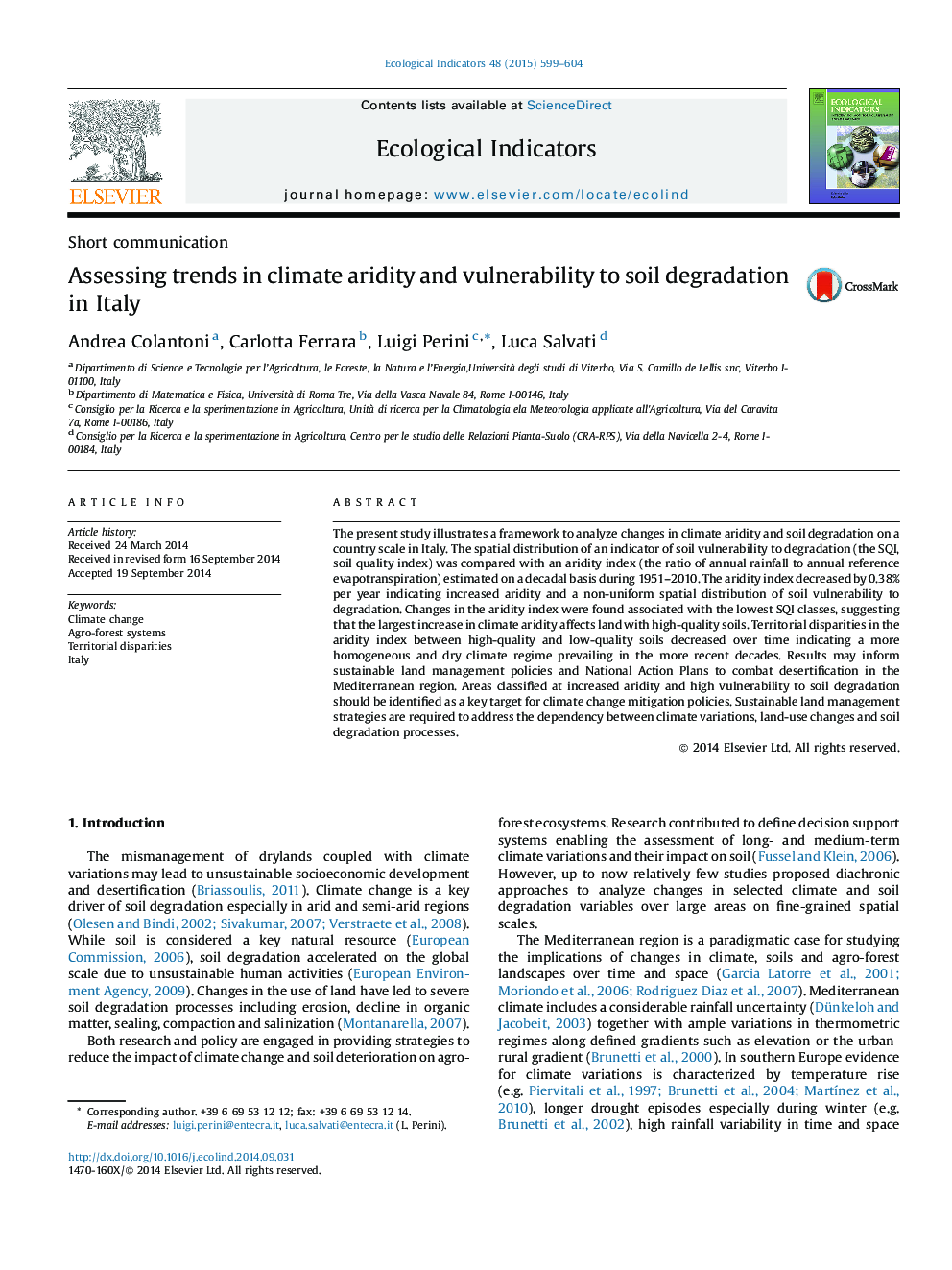| Article ID | Journal | Published Year | Pages | File Type |
|---|---|---|---|---|
| 6295115 | Ecological Indicators | 2015 | 6 Pages |
Abstract
The present study illustrates a framework to analyze changes in climate aridity and soil degradation on a country scale in Italy. The spatial distribution of an indicator of soil vulnerability to degradation (the SQI, soil quality index) was compared with an aridity index (the ratio of annual rainfall to annual reference evapotranspiration) estimated on a decadal basis during 1951-2010. The aridity index decreased by 0.38% per year indicating increased aridity and a non-uniform spatial distribution of soil vulnerability to degradation. Changes in the aridity index were found associated with the lowest SQI classes, suggesting that the largest increase in climate aridity affects land with high-quality soils. Territorial disparities in the aridity index between high-quality and low-quality soils decreased over time indicating a more homogeneous and dry climate regime prevailing in the more recent decades. Results may inform sustainable land management policies and National Action Plans to combat desertification in the Mediterranean region. Areas classified at increased aridity and high vulnerability to soil degradation should be identified as a key target for climate change mitigation policies. Sustainable land management strategies are required to address the dependency between climate variations, land-use changes and soil degradation processes.
Related Topics
Life Sciences
Agricultural and Biological Sciences
Ecology, Evolution, Behavior and Systematics
Authors
Andrea Colantoni, Carlotta Ferrara, Luigi Perini, Luca Salvati,
